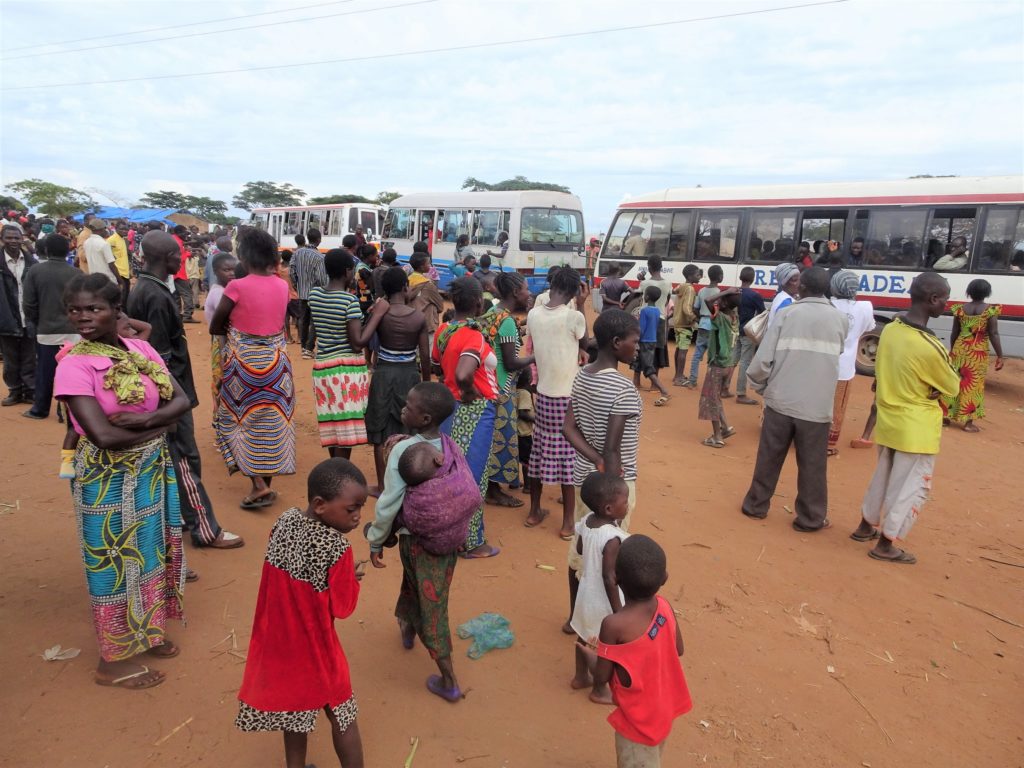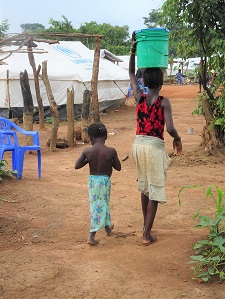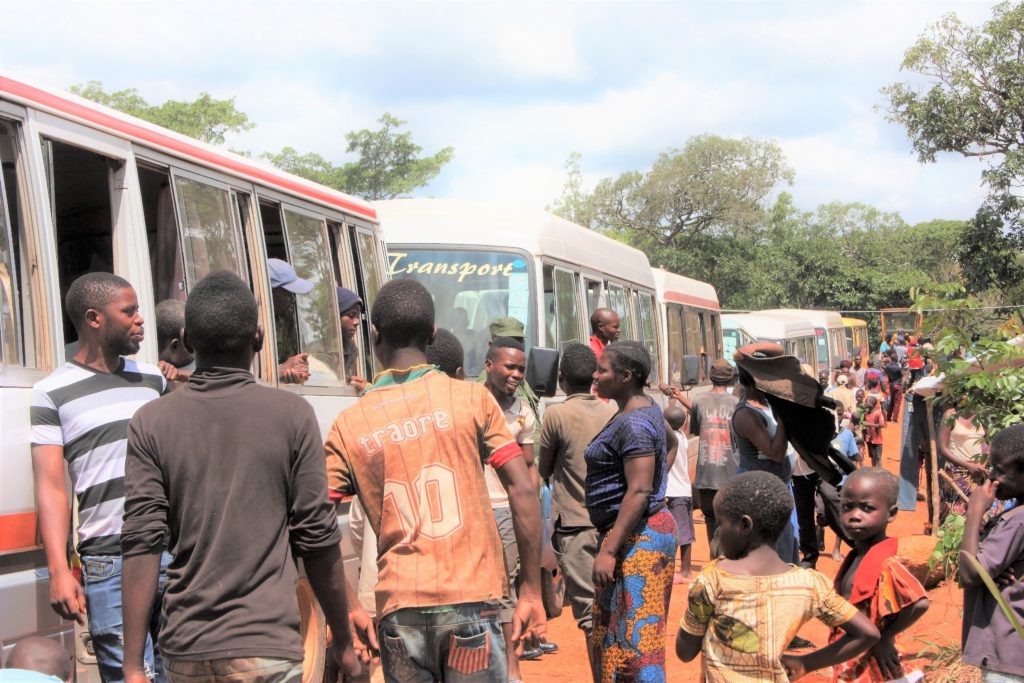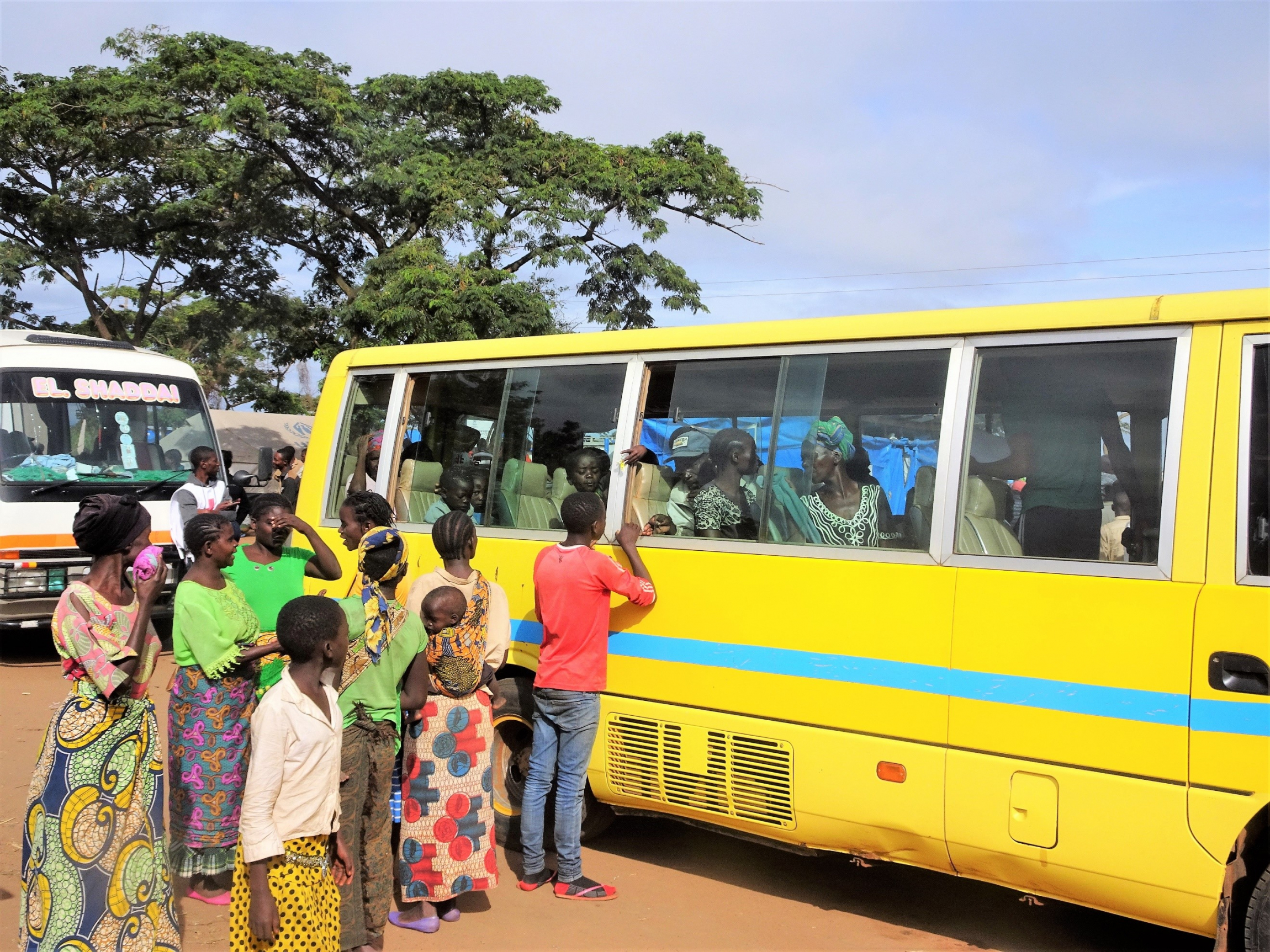All aboard for a new life in Zambia
2018-05-11
© UNICEF/Zambia/2018/Ayisi
Congolese refugees say goodbyes to their friends in Nchelenge district, Zambia.
There’s a buzz of excitement as hundreds of Congolese refugees look for seats on the minibuses that will take them further inside Zambia. As the 246 refugees take their places, conversations with friends and family continue through open bus windows – the Congolese hold hands and chat, while staff from UNHCR count numbers.
The people inside the buses and those waving them off are refugees recently arrived from the Democratic Republic of Congo (DRC) where violence over the last 12 months has driven over 15,000 refugees over the border into Zambia’s Nchelenge district, around 60 per cent of them children. Inside the DRC, over 800,000 children have been displaced.

© UNICEF/Zambia/2018/Ayisi
Refugees at the Kenani Transit Refugee Centre depart for Mantapala resettlement deeper inside Zambia.
For the refugees on the buses, another journey is beginning – four hours by road from the tented Kenani Transit Refugee Centre, where they’ve been for the last few months, to Mantapala settlement deeper inside Zambia. How long they will stay there – months, years or even decades? Nobody knows. What they do know is that they should be able to grow food, get better access to basic services, and be further away from the violence in DRC.
As the mini-buses are about to leave, Jean comes up to me: “Bonjour madame,” he says smiling. I had interviewed Jean a few days earlier. Fifteen years old and small for his age, he tells me he won’t be travelling just yet. The health centre at Mantapala is still being built, so those with existing medical conditions, like Jean, are not moving there for now. For the time being Jean will stay in the transit centre where there’s an ambulance, and a health centre a 10-minute drive away. Jean is still dealing with the horror of witnessing his parents being killed back home in his village. “I miss my parents, but I have accepted their deaths and want their souls to rest in peace,” he says to a Zambian counsellor, Mary Kosumu. For now, he is looked after by his aunt and uncle.

© UNICEF/Zambia/2018/Ayisi
At base camp, Manatapala settlement, Zambia.
It’s sad to say goodbye to Jean. As my colleague and Child Protection Specialist, Innocent Mofya, comments: “Although their time to move will come too, seeing their friends leave, they don’t know whether to be happy or sad.” Innocent is involved in preparations at the new Mantapala settlement, checking on a suitable location for a child-friendly space. The space, run by Save the Children and supported by UNICEF, will be a safe place where children, like Jean, can engage in sports and other activities, along with Zambian children from the local community. I say goodbye to Jean, not sure if I will see him again.
The mini-buses depart for Mantapala settlement, and so do we, though by a quicker route. On arrival we see a vast stretch of forested land with a stream and some mud and stick houses organised around a cleared area. This has been constructed by the refugees who arrived a few weeks ago. At the base camp, there are UNHCR tents, where the newly-arrived refugee families will stay while they build their new homes.
With plenty of muddy ground, we’re fortunate to have rubber boots to hand. As we put them on, we’re greeted by Chibwe Jordan, a Zambian Red Cross hygiene promoter, who grew up in the area. A father of eight, Chibwe says he welcomes the expected influx of a possible 25,000 Congolese refugees over the coming year because he says they will ing development to the area. The settlement services like the health centre will be open to the host community too. “It used to take six hours to walk to the nearest health centre. We lost people, including children, as they couldn’t get treatment in time,” says Chibwe.

© UNICEF/Zambia/2018/Ayisi
Refugees arriving at Mantapala settlement, Zambia.
Innocent takes his leave, trekking through the forest to see the best area for the child-friendly space. He knows how important this will be for the children, many of whom have recently experienced trauma. When we looked around the child-friendly space together at the Kenani transit centre, Innocent had commented, “I see the children in these spaces – they are having fun and look happy, like for that moment, they are able to forget.”
After three hours in Mantapala, we hear whistling, whooping and cheers, and rush over to where the noise is coming from. A crowd has gathered, again buzzing with excitement. The convoy of mini-buses is arriving, greeted by a huge welcome from the refugees who have already settled here. “They are jubilant here,” says Innocent, noticing a difference from earlier.
The new arrivals wave at their friends and peer through the mini-bus windows, anxious to see where they will be staying. I see their hopeful faces and think about Jean, hoping that he – and thousands of other Congolese refugee children – will soon be able to move here and start a better life.
Ruth Ayisi is Communications Consultant at UNICEF Zambia.










